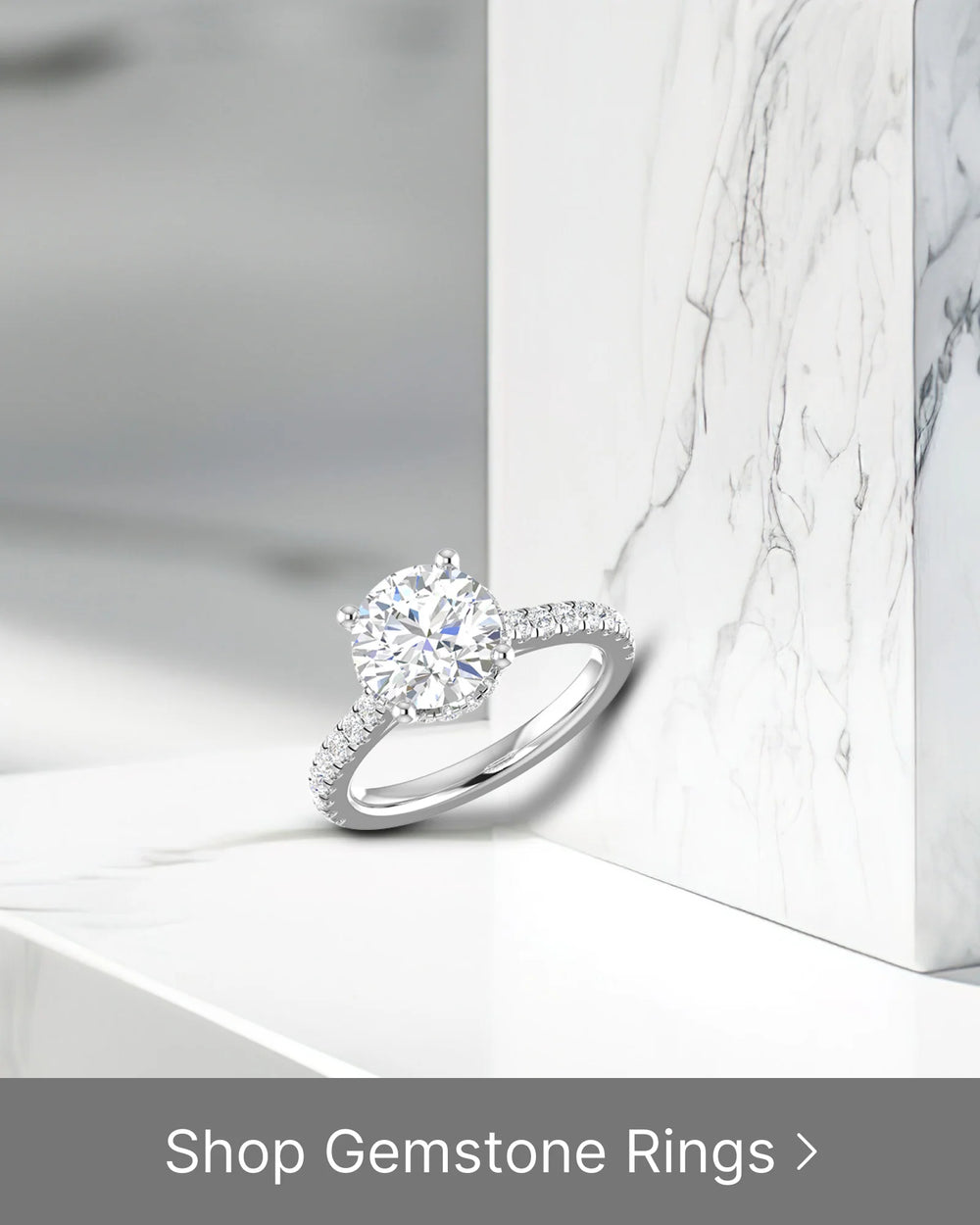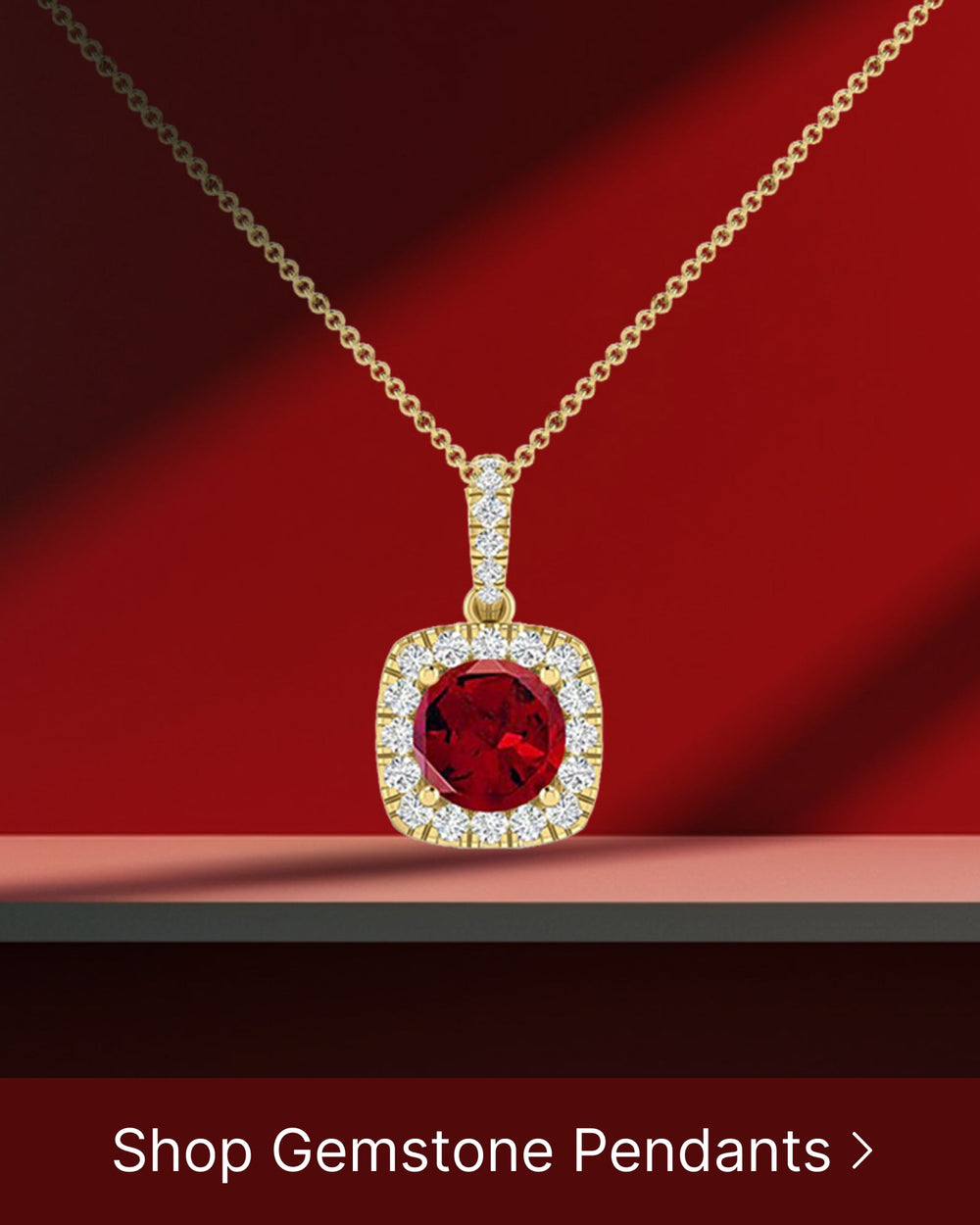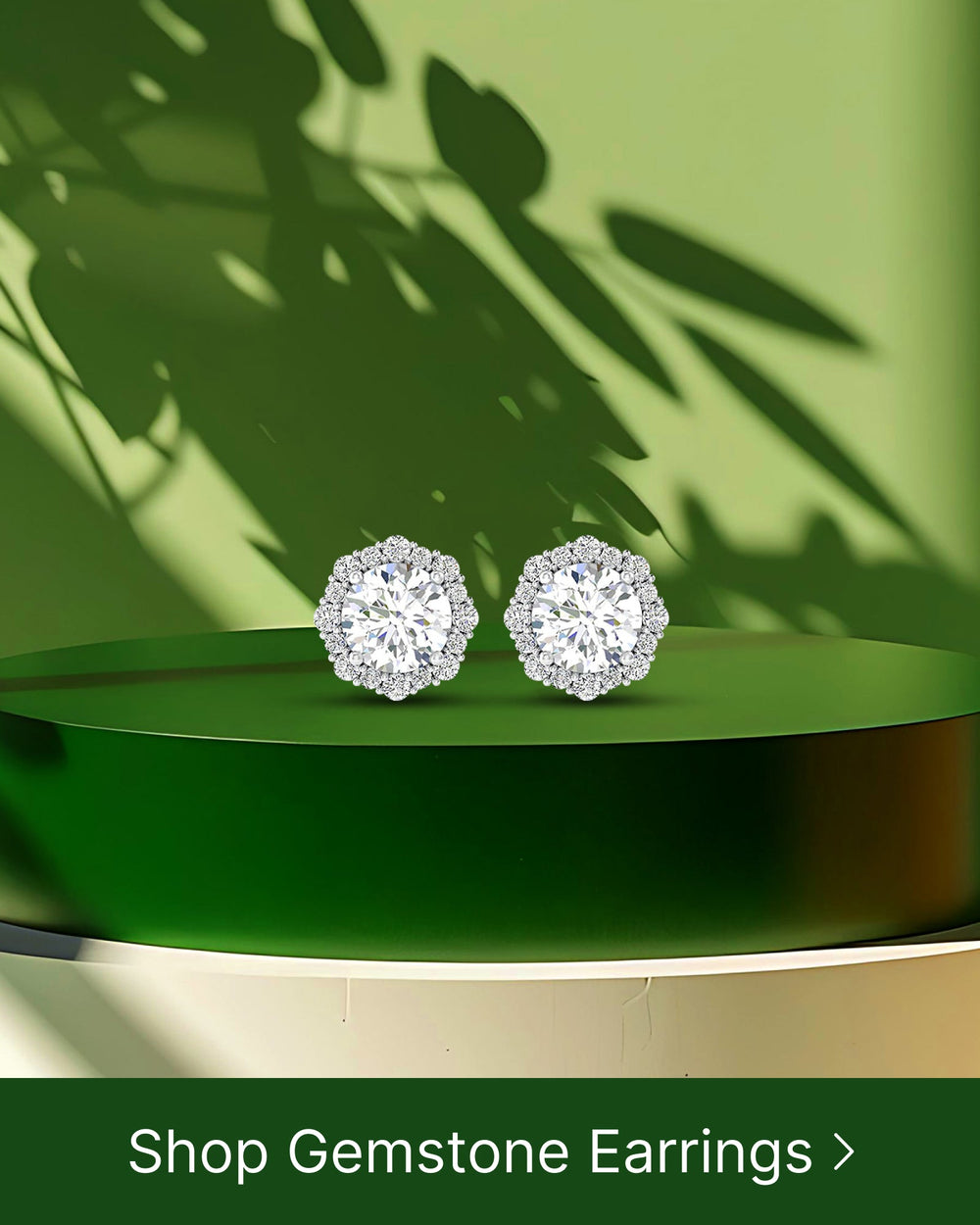Mastering Ruby Cut Grading: Understanding the Scale
In the world of gemstones, the quality of a gemstone's cut is one of the most important factors that determine its value and overall appeal. When it comes to rubies, understanding the intricacies of the cut grading scale is essential for gemologists, jewelers, and enthusiasts alike. In this article, we will delve into the basics of ruby cut grading, explore the components and interpretation of the grading scale, dive into the art of ruby cutting, examine the various factors that influence cut grading, and provide tips for improving your ruby cut grading skills.
The Basics of Ruby Cut Grading
When we talk about ruby cut grading, we are referring to the evaluation of the quality of the cut of a ruby gemstone. Cut grading involves assessing the proportions, symmetry, polish, and overall craftsmanship of a ruby's cut. Each aspect of the cut contributes to the gemstone's brilliance, fire, and overall visual appeal.
Defining Ruby Cut Grading
At its core, ruby cut grading aims to measure the quality of the gemstone's cut in relation to its light performance. A well-cut ruby will exhibit optimal light return, ensuring that the gemstone reflects and refracts light in the most desirable way. This ultimately results in a vibrant and visually stunning ruby.
Importance of Ruby Cut Grading
Understanding ruby cut grading is crucial for various reasons. For jewelers, it allows them to accurately assess the quality and value of rubies, enabling them to provide informed pricing and recommendations to their customers. For gemologists, cut grading helps in identifying gem treatments, detecting potential flaws, and evaluating the overall quality of a ruby. Additionally, for those looking to invest in rubies or simply appreciate their beauty, knowing how to evaluate cut quality allows for a more informed and enjoyable experience.
Proportions in Ruby Cut Grading
One of the key aspects evaluated in ruby cut grading is the proportions of the gemstone. The proportions refer to the relationships between the different dimensions of the ruby, such as the depth, table size, crown angle, and pavilion angle. These proportions play a crucial role in determining how light interacts with the ruby. A well-proportioned ruby will have the ideal balance between depth and width, allowing light to enter and exit the gemstone in a way that maximizes its brilliance and fire.
Symmetry in Ruby Cut Grading
Another important factor considered in ruby cut grading is the symmetry of the gemstone. Symmetry refers to the alignment and balance of the different facets and angles of the ruby. A symmetrical cut ensures that light is evenly distributed throughout the gemstone, resulting in a consistent and harmonious display of brilliance. Any deviations from perfect symmetry can negatively impact the overall visual appeal of the ruby.
Polish in Ruby Cut Grading
The polish of a ruby is also taken into account when grading its cut. The polish refers to the smoothness and quality of the gemstone's surface. A well-polished ruby will have a mirror-like finish, allowing light to pass through without any obstructions. This enhances the gemstone's brilliance and ensures that it can reflect and refract light in a captivating manner. Poorly polished rubies may have visible scratches or dull areas, which can significantly diminish their overall beauty.
Craftsmanship in Ruby Cut Grading
Lastly, the overall craftsmanship of the ruby's cut is evaluated in the grading process. This includes assessing the precision and skill with which the gemstone was cut and shaped. A well-crafted ruby will have clean and defined facets, with smooth transitions between them. The craftsmanship of the cut directly influences the gemstone's ability to interact with light, and a high level of craftsmanship is essential for achieving maximum brilliance and fire.
In conclusion, ruby cut grading involves a comprehensive evaluation of the proportions, symmetry, polish, and craftsmanship of a ruby's cut. Understanding these aspects allows jewelers, gemologists, and enthusiasts to accurately assess the quality and value of rubies, as well as appreciate their beauty to the fullest extent. By considering all these factors, one can truly appreciate the artistry and skill that goes into creating a well-cut ruby.
Delving into the Ruby Cut Grading Scale
The ruby cut grading scale is a standardized system used to evaluate and communicate the quality of a ruby's cut. Understanding the components of this scale is essential for accurately assessing and interpreting the cut grade of a ruby.
When it comes to evaluating the cut of a ruby, there are several factors that come into play. These factors are carefully examined and graded individually to determine the overall cut grade of the gemstone. Let's take a closer look at the components of the grading scale.
Components of the Grading Scale
The grading scale consists of various components that are evaluated individually and collectively to determine a ruby's cut grade. These components include proportions, symmetry, and polish.
Proportions refer to the measurements and angles of the ruby. This includes the depth and table percentage, which play a crucial role in determining how light interacts with the gemstone. A well-proportioned ruby will maximize its brilliance and fire, resulting in a higher cut grade.
Symmetry, on the other hand, focuses on the alignment and precision of the ruby's facets. A perfectly symmetrical ruby will have facets that are evenly distributed and aligned, creating a harmonious and balanced appearance. This aspect of the grading scale evaluates the craftsmanship and attention to detail in the cutting process.
Lastly, polish refers to the quality of the gemstone's surface finish. A ruby with excellent polish will have a smooth and lustrous surface, free from any visible scratches or blemishes. This component of the grading scale assesses the overall craftsmanship and care taken in the finishing stages of the gemstone.
Interpreting the Grading Scale
Interpreting the grading scale requires an understanding of the relative importance of each component. A well-balanced combination of favorable proportions, symmetrical facets, and excellent polish will result in a higher cut grade. This indicates that the ruby has been cut to maximize its beauty and brilliance.
On the other hand, a ruby with suboptimal proportions, poor symmetry, or subpar polish will receive a lower cut grade. This suggests that the gemstone may not exhibit its full potential in terms of its sparkle and overall visual appeal.
It is important to note that while the cut grade is a significant factor in assessing the overall quality of a ruby, it is not the only factor to consider. Color, clarity, and carat weight also play crucial roles in determining a ruby's value and desirability.
By understanding the components of the ruby cut grading scale and how they contribute to the overall cut grade, you can make informed decisions when purchasing or evaluating rubies. Whether you are a gemstone enthusiast or a professional in the jewelry industry, this knowledge will enable you to appreciate and assess the beauty of rubies with greater precision and understanding.
The Art of Ruby Cutting
Behind every stunning ruby gemstone lies the skilled art of cutting. Ruby cutting involves shaping and polishing a rough ruby to enhance its beauty and maximize its potential qualities. While there are various cutting techniques employed by lapidaries, the goal remains the same - to create a visually captivating ruby that exhibits exceptional brilliance and fire.
Techniques in Ruby Cutting
There are several techniques utilized in ruby cutting, with each technique having its own unique characteristics and effects on the final appearance of the gemstone. Techniques such as faceting, cabochon cutting, and mixed cutting are some of the most commonly used methods in creating ruby masterpieces.
Impact of Cutting on Ruby Grade
The cutting of a ruby gemstone has a significant impact on its overall grade. A well-executed cut will maximize the ruby's brilliance, fire, and overall visual appeal, resulting in a higher cut grade. On the other hand, an improperly cut ruby can result in light leakage, diminished visual performance, and a lower cut grade.
Factors Influencing Ruby Cut Grading
Several factors come into play when evaluating the cut grade of a ruby. Understanding these factors is crucial in accurately assessing the quality of a ruby's cut.
Ruby Size and Cut Grading
The size of a ruby gemstone can influence its cut grade. Generally, larger rubies require proportionate cuts to ensure that the gemstone retains optimal light performance. Variation from ideal proportions for larger rubies can result in decreased brilliance and fire, ultimately affecting the overall cut grade.
Color and Clarity in Cut Grading
While color and clarity are primarily evaluated on their own grading scales, they also play a role in cut grading. A well-cut ruby will showcase its color intensity and clarity in the most favorable way. Color zoning or poor clarity due to inclusions can negatively impact the cut grade of a ruby.
Improving Your Ruby Cut Grading Skills
Whether you are a gemologist, jeweler, or ruby enthusiast, there are ways to enhance your ruby cut grading skills. These tips will help you develop a better understanding of the intricacies involved in assessing the quality of a ruby's cut.
Tips for Accurate Grading
1. Familiarize yourself with the components of the ruby cut grading scale, including proportions, symmetry, and polish.2. Study various examples of well-cut and poorly cut rubies to develop a trained eye.3. Utilize gemological tools, such as loupe magnifiers and gemstone colorimeters, to assess cut quality objectively.4. Continuously educate yourself on the latest trends and developments in ruby cut grading.
Common Mistakes in Ruby Cut Grading
When it comes to ruby cut grading, there are common mistakes that even seasoned professionals can make. Being aware of these mistakes can help you avoid potential pitfalls in assessing a ruby's cut grade.
1. Placing too much emphasis on one component of the cut grade, such as focusing solely on proportions and disregarding symmetry or polish.2. Neglecting the impact of inclusions or color zoning on the overall cut grade.3. Failing to consider the individual characteristics and beauty of a ruby beyond its numerical cut grade. A higher cut grade does not necessarily guarantee a more visually appealing ruby.
In conclusion, mastering ruby cut grading is essential for anyone involved in the world of gemstones. Understanding the scale, the art of cutting, factors influencing cut grading, and tips for accurate assessment will elevate your knowledge and appreciation of rubies. Whether you aim to become a skilled gemologist, jeweler, or simply want to make informed decisions when buying a ruby, the understanding of ruby cut grading will guide you on your journey to becoming an expert in evaluating the cut quality of this magnificent gemstone.





